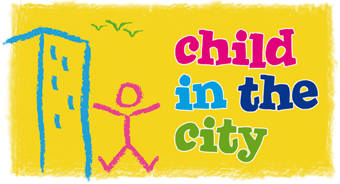Parallel session: Placemaking and co-creation 1 (15:15 – 17:15)
Presentation 1: Reusing local discarded materials for creating playscapes in Africa
Presented by: Alberto Nanclares da Veiga of Basurama
Abstract: What is the point of creating a playground in areas where kids play everywhere? Basurama has been creating playgrounds in different kids environments across Africa since 2011, building them with participation of the communities, reusing discarded local materials. Being very conscious about the critic around playgrounds as a restrictive way of playing and a form of control on kids, they have found how playgrounds can be a powerful way of placemaking in urban difficult environments for kids. With its experience in the global south cities, Basurama has explored various strategies to break the established paradigm for creating playgrounds in Europe: playing with waste is a way of learning how to take care of the environment; as well as reorganizing discarded materials for creating playscapes and putting together kids and adults for building the playgrounds, raises both consciousness about environment and kids rights to the city, together with empowering communities. Throughout that south- north round trip -still going-, they raise some questions that turn out to be very useful for rethinking all kinds of playgrounds: Should playgrounds be adhered to standards or should they try to break those limits? What materials and designs can we use for creating new low-cost and sustainable proposals? How an open and inclusive process of creating play spaces can help to take better care of them and its surroundings?
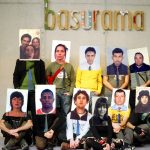
Presentation 2: Green Feet and Childcare 2030. How working on education for sustainable development and raising ecological awareness with the youngest children (0-3)?
Presented by: Leen Dom and Monique van Boom
Abstract: Until recently, very few innovative practices targeting education for sustainable development involved the youngest children in Early Childhood Education and Care or the cities they live in. Education for a sustainable society should, however, pay attention to urban planning and to this type of ‘Early Years Education’ (Gothenberg recommendations, 2009). ECEC lays the foundations for lifelong learning and has the greatest effects on ecological awareness later in life (EPSD, 2010; Siraj-Blatchford, Smith & Samuelsson, n.d). The most important contribution to education for sustainable development in these early years involves the ‘live as you teach’ and the ‘whole school’ approaches, in which ECEC settings monitor their ecological footprints and strive to realize a democratic and participatory society involving children, parents and professionals alike. The Centre of Expertise for Pedagogical Support in Daycare and Schools of the Karel de Grote University College is currently conducting two research projects that tie in with this overall approach. In ‘Green Feet’ four nurseries for babies and toddlers are coached in transforming their city like outdoor area into a natural playing area that is open to the children and their parents. In ‘Childcare 2030’ an action research in two daycare settings tackles the different ways child minders can work on education for sustainability. In this presentation, we want to acquaint participants with the preliminary results of both research projects and present them with the inspirational materials we are developing to raise awareness about sustainable development and urban planning in ECEC teams.
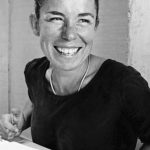
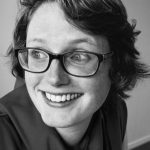
Presentation 3: Co-creation with Children for Children: Promoting Play, Learning and Creativity in the Built Environment
Presented by: Dr Michael Martin and Dr. Andrea Jelic
Abstract: This paper explores how the active involvement of children in the design of the built environment can help promote play, learning and creativity. In doing so we utilise the recent infusion of knowledge from embodied cognitive science with the disciplines of urban design and architecture. Through a systematic review of 130 academic papers, we identify the ‘state of the art’ in existing research on ‘co-creating’ places with children and exemplify the practice internationally. Funded by Capital of Children (Denmark), the study synthesises the key collection of literature and vocabulary associated with ‘children in the city’ since the early 1990s and develops, for the first time, a systematic understanding of the different components associated with designer-child collaborations in the built environment. We conclude with a discussion of the critical conceptual insights and suggested lessons for practice that emerged from our review. Here, we reveal how variances in contextual factors of ‘co-creation’ with children both help and hinder its usefulness to placemaking.

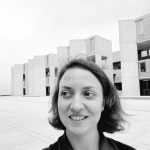
Presentation 4: About a flying goat and a lama
Presented by: Naomé Carmeliet and Lieve Snoeckx
Abstract: Residents of the rural town of Branst, Bornem worked together to improve things in the centre and the school area. Focussing on clean air, safe crossroads, respecting the 30km/h speed limit, more social cohesion, better use of green zones and more space for pedestrians and cyclists. All of this was part of the LaMA project, offering co-creation workshops for adults and a LaMA Junior for kids. Together with the municipality they launched the campaign of the flying goat: calling for less ‘flying’ (hurrying) in traffic but also in life. Children,(grand-)parents and the school team are happy with the way their school area changed. Before, rush hours were chaotic, unsafe and stressful. Parents didn’t have a place to wait for their children and chat. Therefore many stayed in their car while waiting. To kids, the school area wasn’t very interesting. Now people find it peaceful and enjoyable. More children come by foot or bike. There are even grandparents who call themselves ‘benchfriends’ because they met on the benches. Children stay a while after school to play while parents chat.


